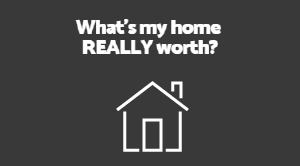-
Lot Size1,177 sqft
-
Home Size1,258 sqft
-
Beds3 Beds
-
Baths3 Baths
-
Year Built1976
-
Days on Market2
Myths About Down Payments
- Real Estate Tips
- April 26, 2018
 While having your mortgage pre-approval is crucial to purchasing a home, your down payment is just as important and shows you mean business. When asking friends and family for advice, we often get myths about the down payment that could lead to a messy situation. Here are some of the most common myths debunked!
While having your mortgage pre-approval is crucial to purchasing a home, your down payment is just as important and shows you mean business. When asking friends and family for advice, we often get myths about the down payment that could lead to a messy situation. Here are some of the most common myths debunked!
1. You need 20% down payment.
Having 20% of the price of the home for a down payment has been the standard for decades. In reality, the down payment amount will depend on the type of buyer you are.
- FHA loan: 3.5% down payment
- VA & USDA loan: can be as low as 0% down payment
You can put less than 20% down with conventional loans, but there’s a catch: you will be on your own for private mortgage insurance (PMI). This will be paid separately to the lender, not towards your mortgage, and its insurance to prove to the lender you won’t default on the loan.
2. Paying mortgage insurance is smarter than paying more for the down payment.
It might seem easier to spend more on PMI over time, but you should calculate it to see if it really will help you or be easier to make a larger down payment. If you pay less than 20%, you’re stuck with the PMI, but only if the principal balance is 78% or less than the original price.
An FHA loan will require mortgage insurance for the entirety of the loan, so you’ll have the extra monthly fee for as long as you live there or until you pay off the mortgage. It’s important to compare your options for the higher or lower down payment.
3. Cash is key.
In competitive markets, having cash could potentially decide whether or not you get the house you bid on. That’s only assuming the seller is in a rush to close. If you have a bigger offer and write a personal letter that resonates with the seller, you could have the advantage over the competition. The benefit of offering cash is that the close goes quicker, and that might not be the case with the seller.
4. Down payment assistance is easy.
Applying and getting approved for down payment help isn’t always easy. There is no national/state-run assistance program. They are mostly local. You also need to be under a certain income to qualify, or they will make exceptions like single parents.
5. You shouldn’t put more than 20% down.
If you have more saved, you should consider putting more money down. Consider this:
- The higher the down payment, the more trustworthy you appear to the lender, which could lead to a lower interest rate for your mortgage.
- The more you pay, the less you are borrowing.
In order to see a difference in the interest rate, you’ll need have at least an extra 5% for the down payment. The interest rate drops at 25%, and even more at 35%.
6. You can take out a loan for a down payment.
If the lender thinks the money you’re borrowing/receiving is a loan whether from a bank or relative/friend, then the repayment for that loan could factor into your mortgage amount and you would qualify for less. This also means you can’t have a family member take out a loan for your down payment for you, then pay them back.
There is nothing wrong with getting monetary help for your down payment, but it has to be a gift. To prove it’s a gift, you’ll need a letter from the gifters saying that they don’t plan on asking for money back. Don’t even think about lying on your mortgage application, because that qualifies as a felony charge.





